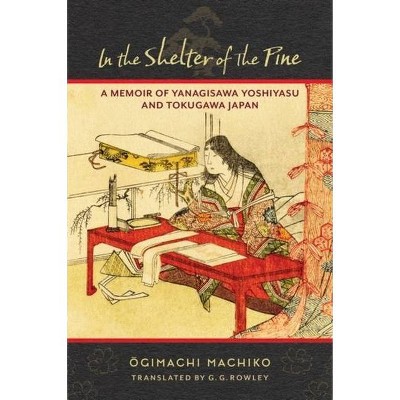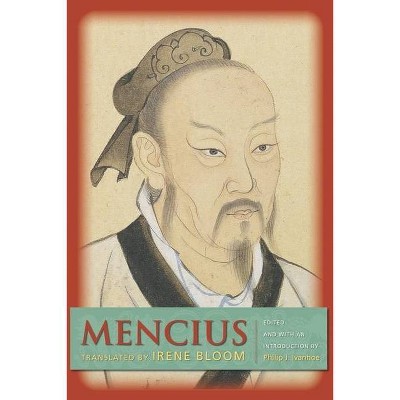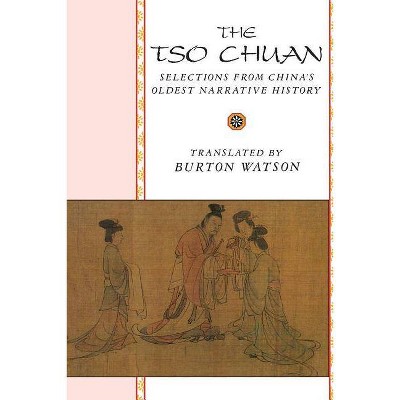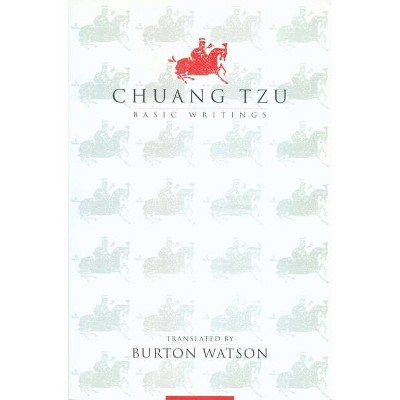In the Shelter of the Pine - (Translations from the Asian Classics) by Ō & gimachi Machiko (Paperback)

Similar Products
Products of same category from the store
AllProduct info
<p/><br></br><p><b> About the Book </b></p></br></br>In the early eighteenth century, the noblewoman Ōgimachi Machiko composed a memoir of Yanagisawa Yoshiyasu, the powerful samurai she had served as a concubine for twenty years. Elegant, poetic, and revealing, <i>In the Shelter of the Pine </i>is the most significant work of literature by a woman of Japan's early modern era.<p/><br></br><p><b> Book Synopsis </b></p></br></br>In the early eighteenth century, the noblewoman Ōgimachi Machiko composed a memoir of Yanagisawa Yoshiyasu, the powerful samurai for whom she had served as a concubine for twenty years. Machiko assisted Yoshiyasu in his ascent to the rank of chief adjutant to the Tokugawa shogun. She kept him in good graces with the imperial court, enabled him to study poetry with aristocratic teachers and have his compositions read by the retired emperor, and gave birth to two of his sons. Writing after Yoshiyasu's retirement, she recalled it all--from the glittering formal visits of the shogun and his entourage to the passage of the seasons as seen from her apartments in the Yanagisawa mansion. <p/><i>In the Shelter of the Pine</i> is the most significant work of literature by a woman of Japan's early modern era. Featuring Machiko's keen eye for detail, strong narrative voice, and polished prose studded with allusions to Chinese and Japanese classics, this memoir sheds light on everything from the social world of the Tokugawa elite to the role of literature in women's lives. Machiko modeled her story on <i>The Tale of Genji</i>, illustrating how the eleventh-century classic continued to inspire its female readers and provide them with the means to make sense of their experiences. Elegant, poetic, and revealing, <i>In the Shelter of the Pine</i> is a vivid portrait of a distant world and a vital addition to the canon of Japanese literature available in English.<p/><br></br><p><b> Review Quotes </b></p></br></br><br>G. G. Rowley's elegant translation captures the graceful rhythms of Machiko's prose, enabling us to step inside this unimaginably different era and see Machiko's world through her own eyes.--Lesley Downer "Times Literary Supplement "<br><br>A graceful translation of an eighteenth-century classic, <i>In the Shelter of the Pine </i>introduces readers to a world in which little girls grind their fathers' ink, concubines write elegant prose, and an ambitious man--the author's husband--defies social convention to rise in the world. --Amy Beth Stanley, author of <i>Stranger in the Shogun's City: A Japanese Woman and Her World</i><br><br>G. G. Rowley's sparkling translation of Ōgimachi Machiko's memoir reveals Machiko's experience as a woman of great learning, sensitivity, and taste whose study of the Japanese classics thoroughly informed her writing. Despite her use of a classical idiom, one has the strong sense that she is writing of her own place in the scheme of Edo period society. The book will be a must-read for all students of Edo history, government, and literature.--Steven Carter, author of <i>How to Read a Japanese Poem</i><br><br>This is an enormously important work, wonderfully translated and annotated. Not only is it one of the few lengthy memoirs written by a woman during the Tokugawa period, it offers the reader insight into daily life, sociopolitical networks, and the symbolic and practical manifestations of power during the reign of the fifth shogun Tokugawa Tsunayoshi.--Marcia Yonemoto, author of <i>The Problem of Women in Early Modern Japan</i><br><br>Written by a noblewoman in Edo and elegantly translated by G. G. Rowley, this unique memoir illustrates how shogun Tsunayoshi and his attendant Yanagisawa Yoshiyasu brought noblewomen from Kyoto into their households and used them as conduits for courtly cultural capital that they employed for diplomatic and political ends.--Anne Walthall, editor of <i>Servants of the Dynasty: Palace Women in World History</i><br><p/><br></br><p><b> About the Author </b></p></br></br>G. G. Rowley teaches English and Japanese literature at Waseda University in Tokyo. She is the author or translator of several biographies of Japanese women, including <i>An Imperial Concubine's Tale: Scandal, Shipwreck, and Salvation in Seventeenth-Century Japan</i> (Columbia, 2013) and <i>Autobiography of a Geisha</i> (Columbia, 2003).
Price History
Price Archive shows prices from various stores, lets you see history and find the cheapest. There is no actual sale on the website. For all support, inquiry and suggestion messagescommunication@pricearchive.us



















